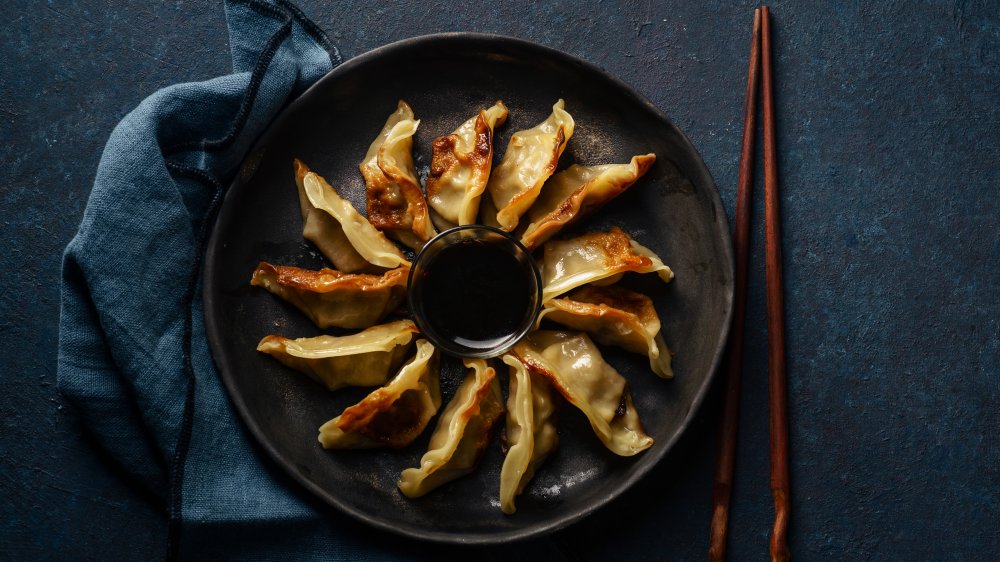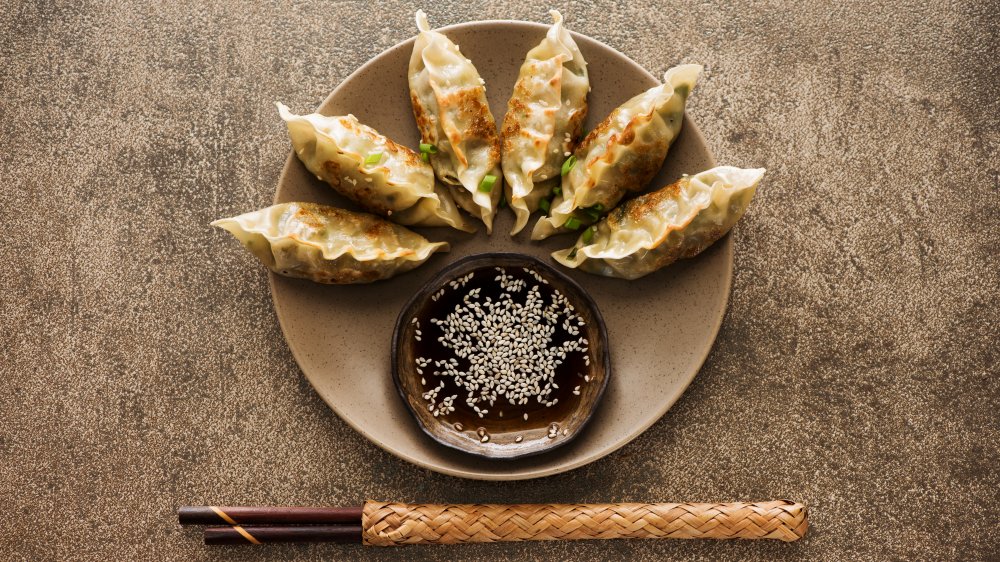What's The Real Difference Between Pot Stickers And Gyoza?
Have you ever been the friend at a sushi restaurant caught ordering pot stickers? Maybe a knowledgeable waiter gently set you straight, prompting, "That will be an order of our gyoza?" You are left unsure as to what the real difference is. Well, we're here to set the record straight. Despite pot stickers and gyoza being similar in appearance, the two are more like cousins than they are siblings.
The Mandarin word for pot stickers is jiaozi — a word that sounds similar to gyoza, which is by no coincidence. Chinese dumplings, or more specifically pot stickers, have been served up for thousands of years in various regions of china. The name came about when a Chinese chef was boiling dumplings in a wok and forgot about it. The water boiled off and the pot stickers stuck to the pan and crisped up. Jiaozi literally means "stuck to the wok," and thousands of years later we are still reminding people of his silly mistake (via Sushi in Joy).
Gyoza, by comparison, are a far more recent invention. During the second World War, the Japanese fell in love with China's jiaozi while they were occupying Manchuria. When they returned home, the Japanese soldiers missed the pot stickers and decided to invent their own Japanese version using ingredients from their own lands (via Shogun).
Ingredients and wrappers make pot stickers different than gyoza
Gyoza have a thinner dumpling wrapper and are filled with finely chopped stuffing. On paper, the two delicious treats are similar but they have some subtly different flavors and textures. Gyoza are typically smaller, and their wrapping crisps up more than Chinese pot stickers. The delicate wrapper gives more of the spotlight to their filling which is most often a combination of ground meat and veggies with an emphasize on garlic. Chinese pot stickers are doughier with a thicker wrapper, and less suitable for frying. They have less of a garlic flavor than gyoza and can be filled with all sorts of meats and veggies (via Yum Of China).
The two dishes are served a bit differently as well. Gyoza are often served with an array of condiments like soy sauce, vinegar, sesame oil, chili oil, and garlic. They may also be served in a bit of soup or drizzled in ponzu, a citrus based soy dressing. Traditional jiaozi are more often served with a simple sauce made from soy sauce, vinegar, and sesame oil (via Gurunavi).
At this point, your stomach is probably grumbling, so why not order a delivery of either of the delicious snacks? And when you do, be sure to call them the right name.

